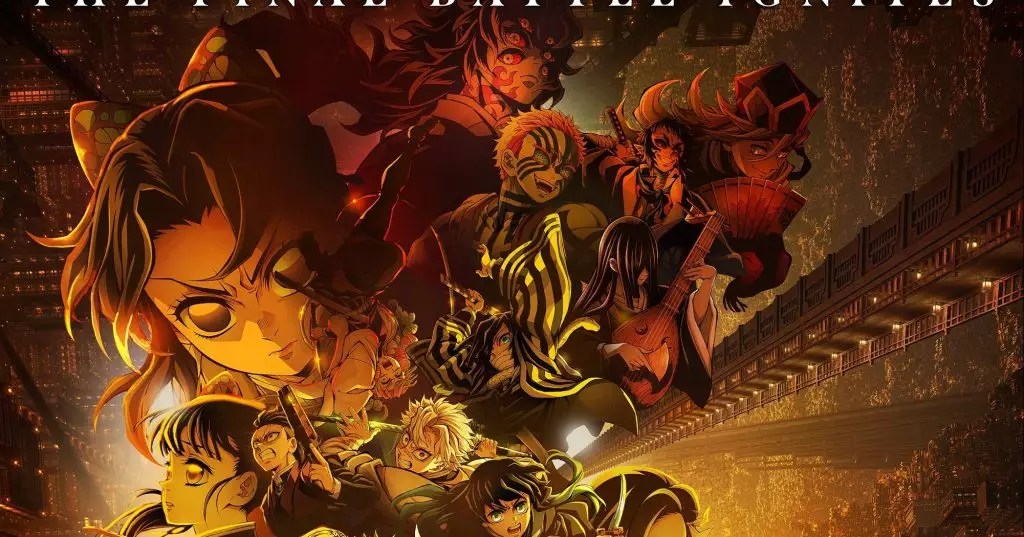The meteoric rise of “Demon Slayer: Infinity Castle” is not just a sign of the franchise’s growing popularity—it’s a seismic shift that signifies the potential of anime to dominate global markets in ways Hollywood has long aspired to but seldom achieved. This film’s staggering box office figures in Japan are a testament to a cultural phenomenon that refuses to be overshadowed by Western cinematic giants. The film shattered opening day records, grossing over 1.6 billion yen ($11.1M), while Sunday alone amassed an astonishing 2.03 billion yen ($13.8M). Those numbers are staggering not merely in isolation but because they mark a new apex for anime’s commercial viability.
What makes this even more extraordinary is the film’s stronghold over the Imax scene, where it set a new all-time record with a $3 million opening day gross—surpassing Hollywood blockbusters and localized titles alike. With a cumulative $3.5 million in Imax revenue over four days, “Infinity Castle” is demonstrating that anime is no longer just niche entertainment but a mainstream juggernaut capable of commanding premium screens and prices. The film’s domestic success far exceeds many comparable Hollywood releases, revealing a cultural shift that’s perhaps underappreciated in the West.
The Cultural and Commercial Implications
The film’s dominance cannot be dismissed as mere fan enthusiasm; it reflects a deep-rooted cultural appetite for anime narratives that resonate globally. The fact that “Infinity Castle” already ranks as Japan’s second-biggest film of the year affirms anime’s ascendance into mainstream consciousness. Unlike Hollywood movies that rely on star power or franchise fatigue, anime’s strength lies in its genuine storytelling, compelling artistry, and the ability to connect with a broad demographic spectrum.
However, this success also raises questions about the Hollywood industry’s ability to compete and innovate. Western cinema has struggled with stagnation, often relying on remakes, reboots, and franchise extensions rather than cultivating original content. Anime, on the other hand, is evolving rapidly—embracing high production values, complex characters, and breathtaking animation—fueling a global appetite that Western studios are increasingly ill-equipped to satisfy. “Infinity Castle” exemplifies this shift, showing that quality storytelling paired with vibrant visuals can outshine polished but formulaic Hollywood offerings.
The international rollout scheduled for this trilogy—coordinated by Sony and Crunchyroll—signifies a strategic pivot. As “Infinity Castle” prepares to dominate screens beyond Japan, the potential for anime to carve out substantial market share outside Asia becomes evident. Especially in North America and Europe, where anime traditionally occupied a niche, the film’s success could signal a reorientation of such markets toward more diverse and high-quality cinematic content. This isn’t just about a popular film; it’s about the emergence of a new cultural dynamic where Japanese anime’s influence expands exponentially.
What the Future Holds for the Genre and the Industry
The feat of “Demon Slayer” is undoubtedly a validation of anime’s ability to scale and thrive in an increasingly competitive entertainment landscape. Yet, its success also exposes the fragility of Hollywood’s current model—reliant on franchises that often lack depth or authenticity. As “Infinity Castle” and future installments demonstrate, passionate storytelling and meticulous animation design resonate deeply with audiences, creating a loyalty that traditional western blockbusters struggle to achieve.
Additionally, the economic implications are profound. The fact that a film rooted in anime culture can surpass Hollywood in box office revenue—particularly on premium formats like Imax—challenges long-held assumptions about the hierarchy of global cinematic markets. It indicates a shift where quality and cultural resonance matter more than star power or budget alone.
This surge also poses a challenge for Hollywood executives: innovate or face becoming increasingly irrelevant as audiences seek authentic, culturally rich stories from diverse sources. The Japanese animation industry’s ability to harness technological advancements and storytelling artistry positions it to lead this charge, effectively redefining what cinematic success looks like in the 21st century.
In this moment of upheaval, the industry must recognize that “Demon Slayer” isn’t an isolated incident but a harbinger of a future where anime and similar cultural exports will command a bigger share of global attention and revenue. If Hollywood continues to ignore this reality, it risks becoming a relic—an industry outpaced by nimble, culturally authentic competitors who know how to tell stories that truly resonate.


Leave a Reply